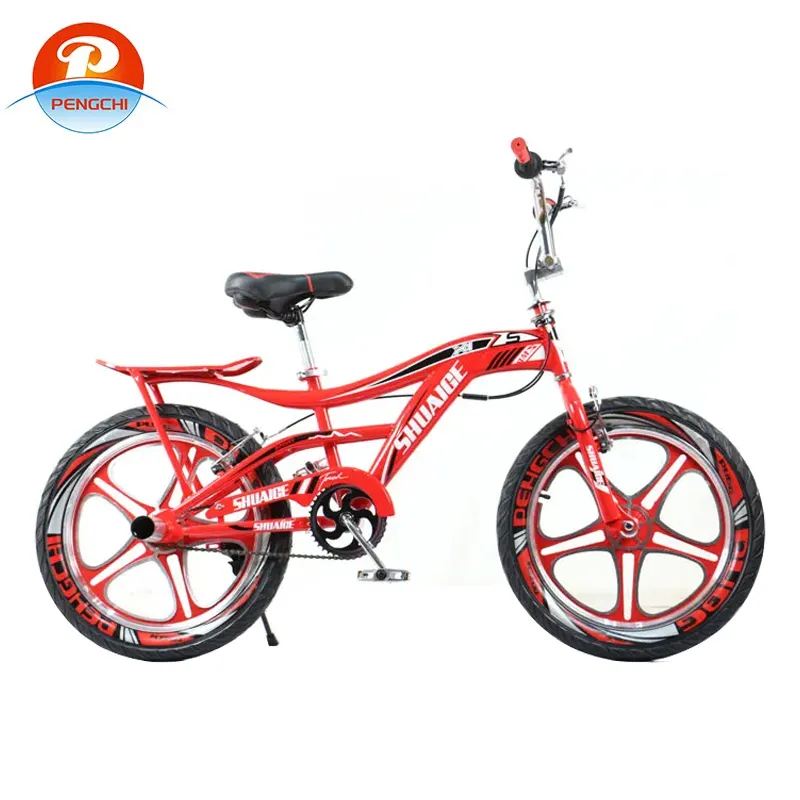2 月 . 10, 2025 11:35 Back to list
mountain bicycle for sale
Mountain biking is a diverse sport with various styles catering to different terrains and riding preferences. Choosing the right mountain bike style is crucial for both beginners and seasoned riders to enhance their experience and performance. Each style offers unique features and requires specific expertise. Here, we break down the different mountain bike styles, providing insights drawn from real-world experience and expert knowledge.
Downhill (DH) Mountain Bikes are built for steep, rocky descents and bike park enthusiasts. Focused entirely on descending, these bikes often feature over 200mm of suspension travel, accommodating the harsh impacts of high-speed downhill runs. Their sturdy frames are engineered to withstand extreme forces, meaning climbing ability is sacrificed in favor of descending performance. Experienced riders are drawn to downhill bikes for their unparalleled stability and shock absorption on the most challenging and rugged descents. Fat Bikes are unique with their oversized tires designed to handle snow, sand, and loose terrains that traditional mountain bikes cannot. The primary attraction of fat bikes is their extraordinary traction and flotation on soft surfaces, providing a year-round riding option in regions with extreme weather conditions. Riders can explore previously inaccessible terrains, expanding the scope and excitement of mountain biking. The forgiving nature of fat bikes also makes them an excellent choice for beginners navigating unstable ground. Electric Mountain Bikes (e-MTBs) have surged in popularity, offering an electrified boost that makes mountainous trails more accessible. With the assistance of electric motors, riders can tackle more demanding trails and extend their riding adventures without exhausting themselves. E-MTBs integrate the characteristics of various bike styles, providing options for cross-country, trail, and even enduro riding augmented with electrical power. They are particularly appealing to riders who want to experience the thrill of mountain biking without the physical demands of traditional pedaling. Understanding these different mountain bike styles is essential for riders to choose the right bike for their specific needs and preferences. Each style has its own set of features to accommodate the varied demands of mountain biking terrains, from speedy climbs to technical descents. Sharing insightful knowledge rooted in experience promotes trustworthiness and assists buyers in making informed decisions that elevate their riding experience and align with their desired biking style. Whether a rider prefers the technical challenges of enduro trails or the thrill of downhill descents, the perfect mountain bike awaits, contributing to unforgettable outdoor adventures.


Downhill (DH) Mountain Bikes are built for steep, rocky descents and bike park enthusiasts. Focused entirely on descending, these bikes often feature over 200mm of suspension travel, accommodating the harsh impacts of high-speed downhill runs. Their sturdy frames are engineered to withstand extreme forces, meaning climbing ability is sacrificed in favor of descending performance. Experienced riders are drawn to downhill bikes for their unparalleled stability and shock absorption on the most challenging and rugged descents. Fat Bikes are unique with their oversized tires designed to handle snow, sand, and loose terrains that traditional mountain bikes cannot. The primary attraction of fat bikes is their extraordinary traction and flotation on soft surfaces, providing a year-round riding option in regions with extreme weather conditions. Riders can explore previously inaccessible terrains, expanding the scope and excitement of mountain biking. The forgiving nature of fat bikes also makes them an excellent choice for beginners navigating unstable ground. Electric Mountain Bikes (e-MTBs) have surged in popularity, offering an electrified boost that makes mountainous trails more accessible. With the assistance of electric motors, riders can tackle more demanding trails and extend their riding adventures without exhausting themselves. E-MTBs integrate the characteristics of various bike styles, providing options for cross-country, trail, and even enduro riding augmented with electrical power. They are particularly appealing to riders who want to experience the thrill of mountain biking without the physical demands of traditional pedaling. Understanding these different mountain bike styles is essential for riders to choose the right bike for their specific needs and preferences. Each style has its own set of features to accommodate the varied demands of mountain biking terrains, from speedy climbs to technical descents. Sharing insightful knowledge rooted in experience promotes trustworthiness and assists buyers in making informed decisions that elevate their riding experience and align with their desired biking style. Whether a rider prefers the technical challenges of enduro trails or the thrill of downhill descents, the perfect mountain bike awaits, contributing to unforgettable outdoor adventures.
Previous:
Latest news
-
Toy Car with Parental Remote - Safe Electric Ride-On Car with Parental Control
NewsJun.10,2025
-
Cheap Bikes for Students - Affordable & Durable Student Bicycles Online
NewsJun.10,2025
-
Children Balance Bike Lightweight & Adjustable OEM Designs
NewsMay.30,2025
-
Junior BMX Race Bikes Lightweight, Durable & Speed-Optimized
NewsMay.30,2025
-
21-Speed Foldable Gear Cycle Compact & Portable Commuter Bike
NewsMay.30,2025
-
Affordable & Durable Bikes for Students Campus Commutes Made Easy
NewsMay.29,2025



